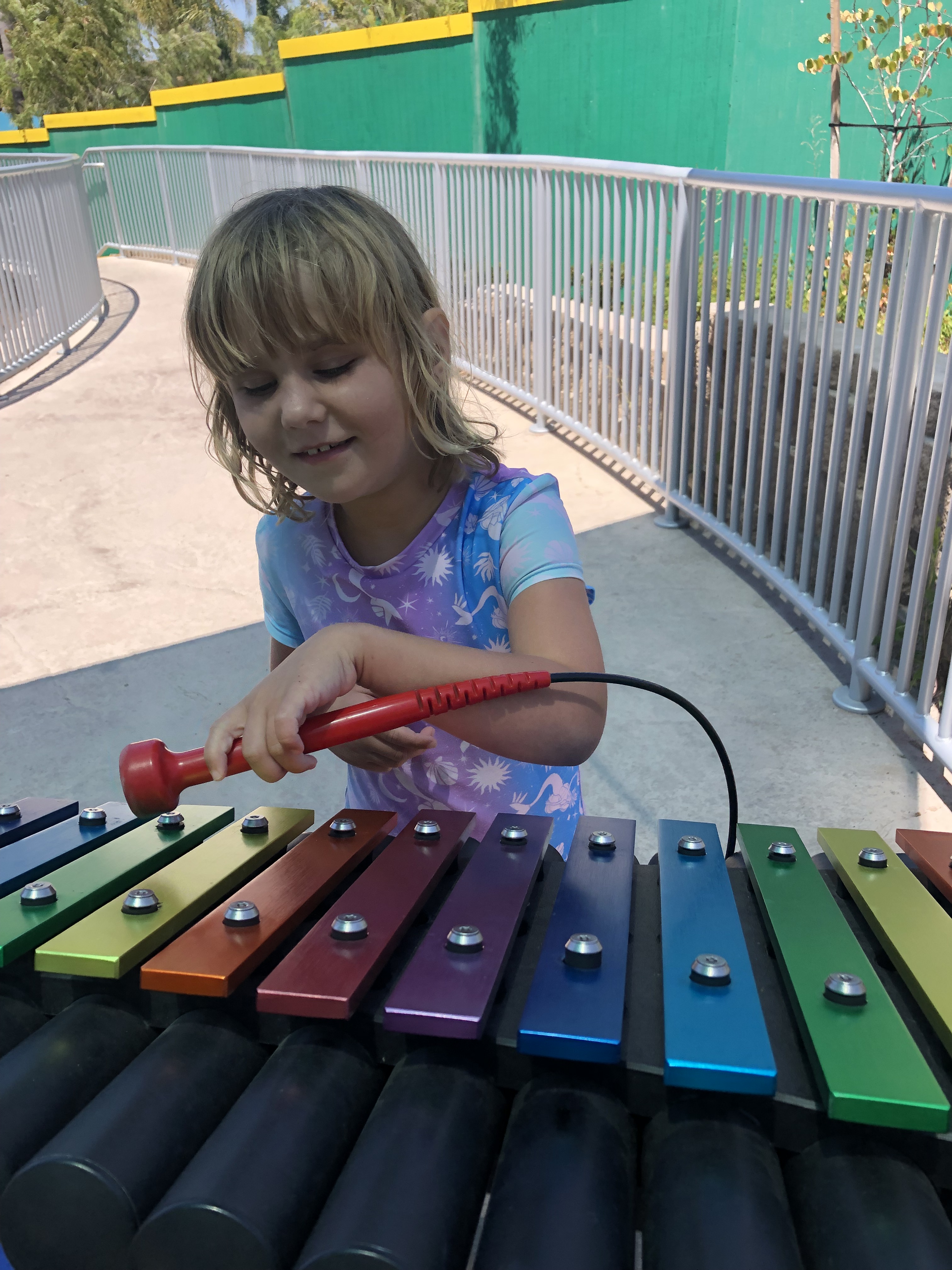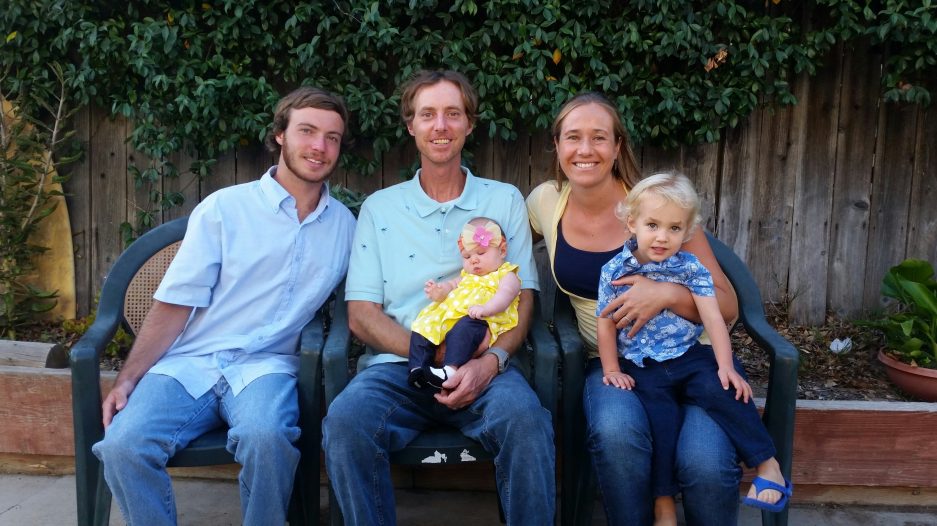A couple of days after we returned home from the Dup15q Alliance family conference in Nashville, I went on my computer to complete the Vineland parent form. At the conference Coral was part of ongoing research — in-person assessments accompanied by parental surveys — to provide developmental information about the syndrome. The Vineland is a way to assess a child’s development in comparison to same-age peers. It gathers information in various areas of development, including communication, gross motor development, adaptive skills and socialization. Statements about a child’s development are presented, and a parent rates the frequency of occurrence: Usually/often, sometimes or never. Points are calculated per category and compared to a normed amount based on a child’s age.
Over the course of Coral’s life, I have completed several of these Vinelands, but my most recent was a couple of years ago. While competing the survey this time, I was happily surprised at the increased number of questions for which I could now answer “Usually/Often.” These included questions about her knowledge of the alphabet and knowing more than 50 words, among others.
I finished the survey and was given a response that results would be ready within an hour. That night, after the kids went to bed, I opened my laptop, curious about her results.
“Ahhh, crap,” I mumbled to myself, as I scrolled through the several pages of Coral’s Vineland results. I’m not sure what I was expecting to see. Despite having completed these surveys, or other similar ones, for the past 7 years, I still forgot. For me, these have never been about comparing Coral to her neurotypical peers, but rather looking at her own growth over time. I needed a Sinead O’Connor song playing in the background, just as a reminder: Nothing compares to you.
Though standardized assessments and parent forms serve an important role in the research side of Dup15q, they struggle to capture Coral’s nuanced development. Questions break skills into typical developmental trajectories, which reduces Coral’s points when her current skills are spread out inconsistently across the developmental landscape or when she does things in a unique way that cannot be captured by the standardized questions. For example, one of the statements reads, “Points to at least three body parts shown in pictures when you ask.” Coral knows the names of body parts and talks about body parts with her AAC. However, if I were asking her to point to characters’ body parts while reading one of her favorite picture books, she would probably disengage. For Coral, reading a book is for reading a book, not being questioned about out of context topics.
Still, her development diverges from neurotypical, and as such her scores compute to normed equivalents below the first percentile in almost every category. Imagine a bell curve with a high peak in the center (representing the 50th percentile), the first percentile sits extremely far to the left of the curve. Where the space under the curve near the 50th percentile is expansive, the space below the curve at the equivalent of the 1st percentile is tiny.
From a societal perspective, this tiny space is often (unfortunately) equated with the perceived value and worth of Coral’s lived experience and equivalently my lived parenting experience. Despite the space being so small, I have found that inhabiting this space as a mother has led to more expansion than I ever imagined was possible. Parenting in the tiny space to the far left of the curve has allowed me the opportunity to choose to see things far differently.
This space is filled with other parents, too —ones that similarly never expected to be parenting under this part of the curve. Some of these parents recently filled a Nashville hotel’s conference rooms with energy and enthusiasm for the family conference at the end of July. This is not a group of parents that is counting on things getting easier as our kids get older. In fact, I think many of us realize that things could possibly become more challenging. Despite each of these parents looking out to a future that holds a multitude of potential paths for their child in different areas — medically, developmentally, behaviorally — I see parents finding their way, individually and collectively. They are flexible, patient, thoughtful, loving and strong advocates. This may be a rare space, but I’m in good company. For that, I’m grateful.
Even with a supportive alliance, parenting in this realm is not all rainbows and butterflies. It can still feel isolating and challenging, even in the good times. In the hardest times, it’s a swirl of emotions seemingly fueled by hurricane force winds. The best I can do is buckle in for the ride and try to feel it all, until it passes. And while parenting is the hardest thing I’ve ever done, parenting a child with a rare diagnosis adds several complex dimensions, notwithstanding a necessary vigilance to maintain Coral’s safety. All. The. Time.
Sometimes I drift off into memories of when I was pregnant with Coral. In one such memory, I am sitting on the couch after Coral’s 20-week anatomy ultrasound. While holding my pregnant belly, I tell Tom, “I just don’t think I could parent a child with special needs (at the time that’s the phrase I used). I’m so glad the ultrasound looked good.” I sit there daydreaming about Coral, while counting my “lucky stars” that I will remain a part of the typical parenting experience.
Now I can’t help but see the irony and naivety in that entire moment. Those “lucky” stars I was counting seemed lucky in large part because they represented a parenting experience that didn’t fall outside of the norm. They were comfortable stars. Expectation-abiding stars. Familiar stars. Easier stars. 50th percentile, average stars.
By contrast, life in the first percentile is like parenting from the stars — an outer space parenting experience that calls for a radical restructuring of my perceptions, values and thoughts around life and disability. Parenting in this space provides a daily reminder of how precious and fleeting life is. The odds of Coral being conceived and being born were astronomically low to begin with — to get to be her mother is a rare statistic I wouldn’t trade.
So I will sit here in the first percentile with Coral, watching with consistent surprise at the tremendous amount of life that fits in the space beneath this part of the curve — the giggles, the smiles, the growth, the curiosity, the determination, the love, the patience, the empathy, the compassion and the community.
I never knew so much could fit in such a rare space. But I’m glad I know now.

